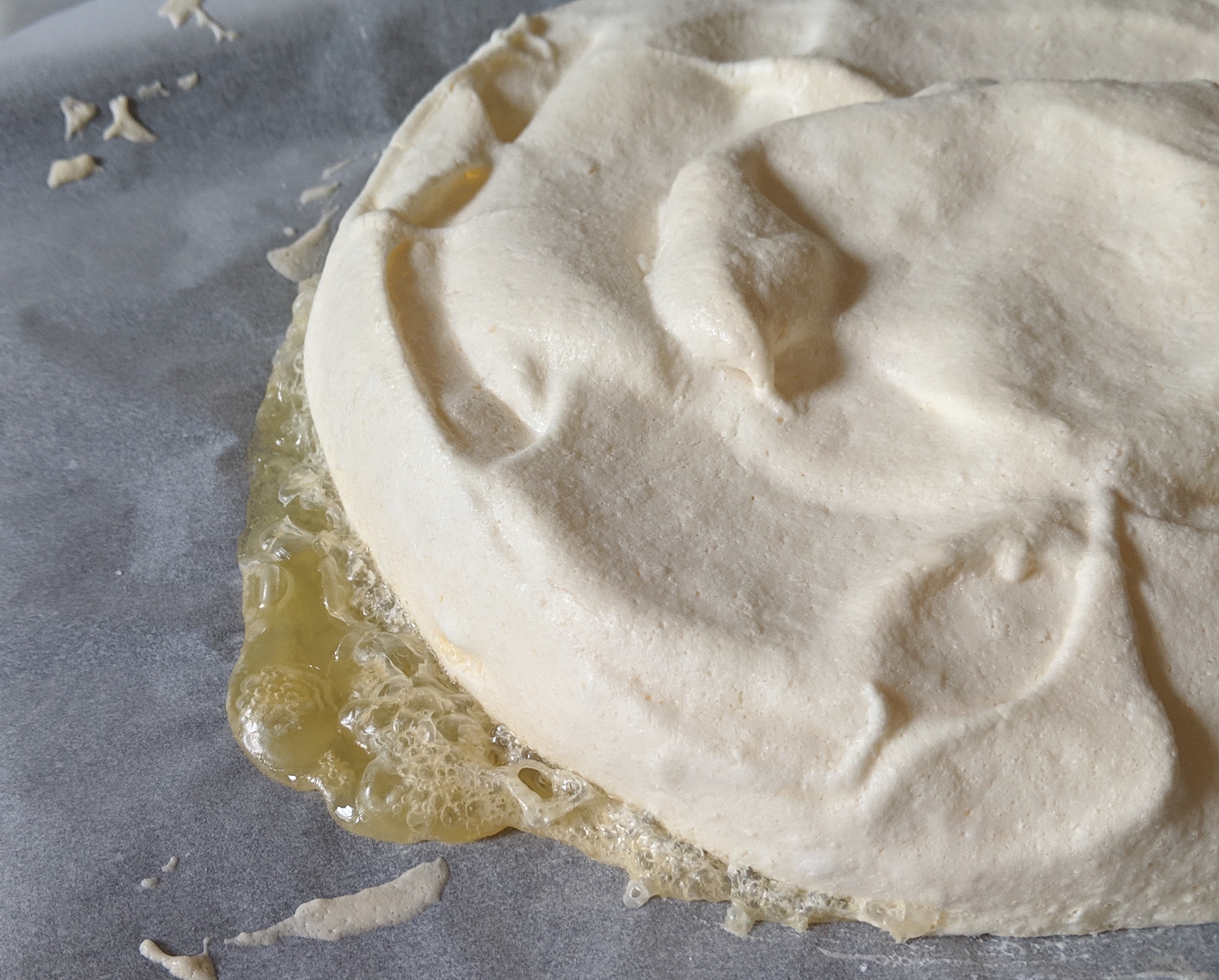I'm learning to make Pavlova. I'm five attempts in and generally pretty happy with my latest one except for the weird "leaking" that happens during baking. Anyone know why this happens and how to stop it?
Ingredients:
- 160g egg whites (at room temperature)
- 1 teaspoon lemon juice
- 200g icing sugar (I tried caster sugar the last time which had the same problem)
- 2 teaspoons cornstarch
- A few drops vanilla extract
Method:
- Wipe the bowl and whisk with a piece of paper towel dipped in a little lemon juice
- Preheat oven to 150c (300f)
- Beat until egg whites are stiff - check by turning the bowl over (slowly!), if they move keep whisking! (I tried doing a bit less whipping one time - same problem)
- Add lemon juice to egg whites
- Add the sugar gradually, one heaped tablespoon every 45 seconds; check for graininess every 8 additions
- Put the pav in the oven and then turn down it to 100c (200f) right away
- Cook for 1.5 hours
- Turn off oven but leave pavlova in overnight


